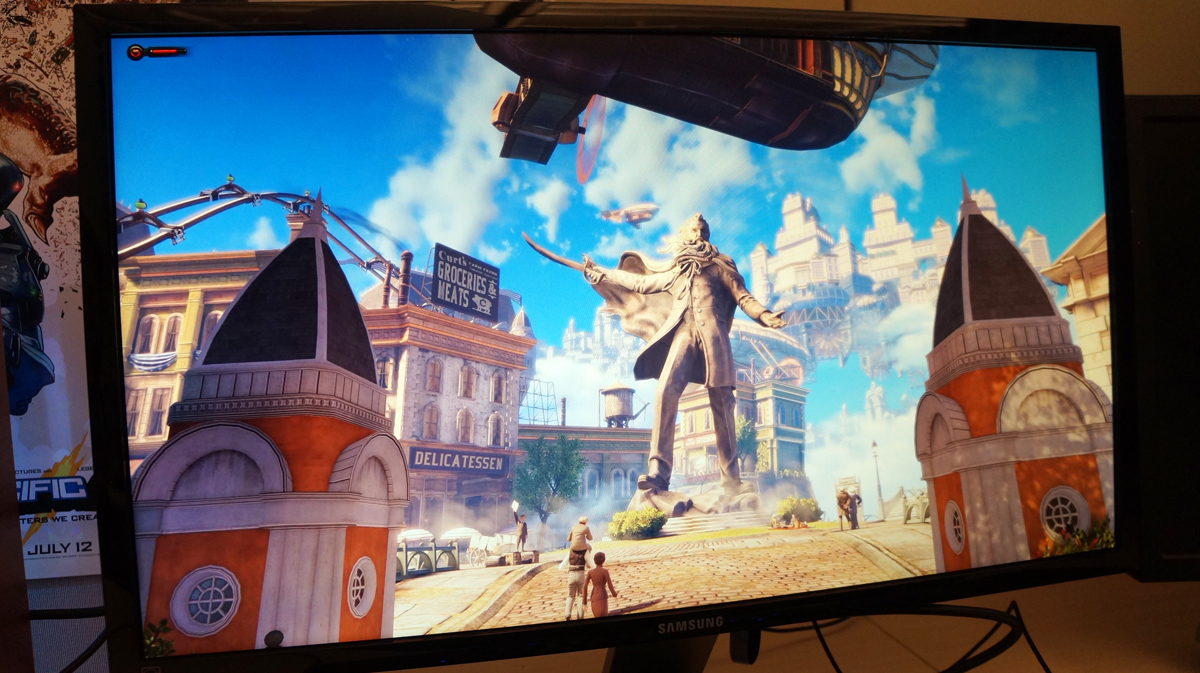How to calibrate your monitor in Windows

This article was originally published in PC Gamer magazine.
The likelihood is that unboxing your monitor and plugging it in is as far as you went in 'setting it up.' A monitor's default settings, however, are rarely its best. The good news is that Windows can help you strike the right balance without recourse to expensive third-party software. We don't need the 100% consistently of colour reproduction that the professionals demand, just a clear sharp image when night falls on the DayZ server.
Here's a quick and easy way to improve the colour calibration of your monitor without any extra hardware or software.
1: Get ready
The first thing to do is get familiar with the on-screen display (OSD) of your monitor. They’re generally all different and mostly frustratingly obstructive. Before you start calibrating you’ll also want to have your screen on for at least 20 minutes so that the backlight is fully warmed up. Only then should you poke around with your settings. Somewhere in there will be a reset option to return your screen to its factory defaults—start with that.
2: Get settled
Now that your screen is back to its default state, it’s time to ensure you’re seated correctly. Yes, really. Given the limited viewing angles TN panels afford it’s important to have them at the correct position for your eye. If you have a nicer IPS display, this isn't as vital, but it will still ensure you're making a smart calibration. The top bezel of your monitor should be directly in your sight line when you’re sitting normally. This might sound a bit silly, but it’s also worth making sure your graphics drivers are running the screen at its native resolution.
The biggest gaming news, reviews and hardware deals
Keep up to date with the most important stories and the best deals, as picked by the PC Gamer team.
3: Go!
Windows has its own calibration wizard, but it’s not the easiest thing to find. Your best bet is to simply tap the Win key or bring up the search box and type ‘calibrate’. This should bring up the ‘Calibrate display colour’ program; click on that and you’re away. If you’ve got more than one screen you’ll need to run this program on each—shift the calibration window to the display you want to calibrate and hit the ‘next’ button.
4: Gamma time
The first thing to do is fiddle with the gamma settings for your machine. This is like adjusting both brightness and contrast at the same time and enables you to reveal detail in shadowy or over-saturated game environments. The wizard gives three indicators: too much, too little and just right. Adjusting the slider to match the ‘just right’ levels will set your gamma to its optimum level for your current display.
5: Brighten up
Now you can move on to the brightness and contrast settings themselves. This is where familiarity with your OSD comes into play, as you’ll be fiddling with your actual monitor controls for this to work. Again you get three examples as to the ideal brightness and contrast settings and you’ll go through them one at a time ensuring Mr Snooker Player and Mr Crisp White Shirt are offering the right balance of brightness and contrast.
6: Fifty shades of game
Now we move on to colour balance. Well, grey balance, anyway. You have three sliders to play with here—red, green and blue—to ensure you get a neutral shade of grey on your display. Once you’re satisfied, the final screen gives you the chance to compare the previous and current settings. Save your settings and you’re away.
7. Bonus time
For more fine-tuned calibration you can always try the useful LCD calibration pages at www.lagom.nl. If you want to go a step deeper, but still don't want to buy any fancy calibration tech, check out the ICC color profiles on TFTCentral. They offer custom-tuned profiles for hundreds of monitors, which you can download and install through Windows. Look for your monitor on the list and download a profile if there's one available. Then scroll down to the bottom half of the page for an easy walkthrough of how to install them.

Dave has been gaming since the days of Zaxxon and Lady Bug on the Colecovision, and code books for the Commodore Vic 20 (Death Race 2000!). He built his first gaming PC at the tender age of 16, and finally finished bug-fixing the Cyrix-based system around a year later. When he dropped it out of the window. He first started writing for Official PlayStation Magazine and Xbox World many decades ago, then moved onto PC Format full-time, then PC Gamer, TechRadar, and T3 among others. Now he's back, writing about the nightmarish graphics card market, CPUs with more cores than sense, gaming laptops hotter than the sun, and SSDs more capacious than a Cybertruck.
Most Popular

